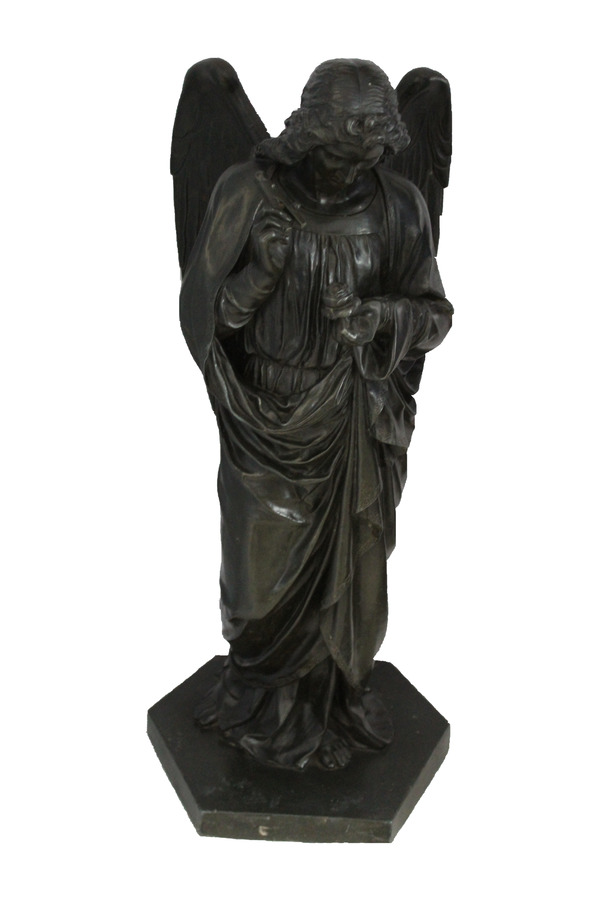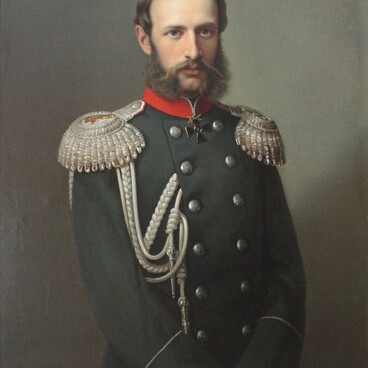In the 1920s, Syzran’s Museum of Local History and Lore got a lot of new exhibits from the former noble estates in the area. The sculpture “Angel with a Rose” was brought to the museum from the Usolye estate of the Orlov-Davydovs on May 5, 1925. Nobody knows for sure how the sculpture found its way into the estate in the first place, but Count Vladimir Orlov-Davydov brought many works of art from his frequent journeys in Europe, and other members of the family did too. The sculpture was intended to decorate one of the secluded corners of the landscape park on the estate which had been laid down in the 1840s by French architect Pomre.
“Angel with a Rose” is a small sculpture that uses primarily rounded shapes. It was cast at Moritz Geiss' iron foundry in Berlin in 1841 and was based on sketches by Hermann Knaur, a student of two famous German sculptors Ernst Ritschel and Ernst Hähnel. Given the level of detail of the sculpture and the fact that it has labels, the sculpture can be regarded as a one-of-a-kind work of art as opposed to being a mass-produced piece.
Moritz Geiss' foundry competed with the products of the Royal Prussian foundries and other famous manufacturers of the time. Their distinctive feature was the liberal use of natural ornaments and high quality. The foundry often had famous German sculptors draw sketches for it so a lot of its productions gained wide recognition and awards at various art exhibitions.
The elegant figure in “Angel with a Rose” stands on a hexagonal foundation, resting its weight on the left leg. The angel holds a compass in the right hand and a blooming spherical rose in the left. The angel’s head is slightly bowed as he looks at the rose dreaming about a perfect universe, one full of harmony, proportion, and geometric perfection. The sculpture can be seen as an allegory to the muse of astronomy, geometry, mathematics, geography, melancholy, or wisdom. One sign of that is the compass that is always ready for use for measuring things and is an attribute of the muse of astronomy while the rose is a symbol of the goddess Venus. The sculpture may also have a secret masonic message on account the Knaur was a member of the Leipzig masonic lodge.
“Angel with a Rose” is a small sculpture that uses primarily rounded shapes. It was cast at Moritz Geiss' iron foundry in Berlin in 1841 and was based on sketches by Hermann Knaur, a student of two famous German sculptors Ernst Ritschel and Ernst Hähnel. Given the level of detail of the sculpture and the fact that it has labels, the sculpture can be regarded as a one-of-a-kind work of art as opposed to being a mass-produced piece.
Moritz Geiss' foundry competed with the products of the Royal Prussian foundries and other famous manufacturers of the time. Their distinctive feature was the liberal use of natural ornaments and high quality. The foundry often had famous German sculptors draw sketches for it so a lot of its productions gained wide recognition and awards at various art exhibitions.
The elegant figure in “Angel with a Rose” stands on a hexagonal foundation, resting its weight on the left leg. The angel holds a compass in the right hand and a blooming spherical rose in the left. The angel’s head is slightly bowed as he looks at the rose dreaming about a perfect universe, one full of harmony, proportion, and geometric perfection. The sculpture can be seen as an allegory to the muse of astronomy, geometry, mathematics, geography, melancholy, or wisdom. One sign of that is the compass that is always ready for use for measuring things and is an attribute of the muse of astronomy while the rose is a symbol of the goddess Venus. The sculpture may also have a secret masonic message on account the Knaur was a member of the Leipzig masonic lodge.



